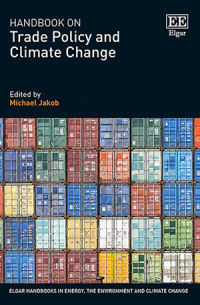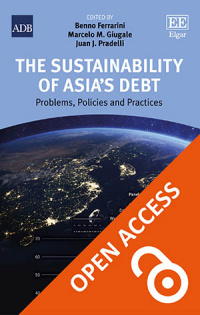
Paperback
A Guide to the Global Business Environment
The Economics of International Commerce
9781783476695 爱德华伊利加出版社
This MBA textbook provides a guide to the international institutions, both public and private, that exist to regulate and facilitate international business. William Kerr and Nicholas Perdikis explain how international business decision making should take into account the ideas and institutions that make up the international commercial environment, such as why trade theories are important to business; the ways in which governments can restrict trade; the role of international trade rules in reducing risk; the threats that anti-dumping and countervail actions pose; the pros and cons of operating multilaterally; the role of trading houses and the advantages of using private sector institutions to settle international business disputes.
More Information
Critical Acclaim
Contents
More Information
This MBA textbook provides a guide to the international institutions, both public and private, that exist to regulate and facilitate international business. William Kerr and Nicholas Perdikis explain how international business decision making should take into account the ideas and institutions that make up the international commercial environment, such as why trade theories are important to business; the ways in which governments can restrict trade; the role of international trade rules in reducing risk; the threats that anti-dumping and countervail actions pose; the pros and cons of operating multilaterally; the role of trading houses and the advantages of using private sector institutions to settle international business disputes.
Key features include:
• Economic theory presented in a business-friendly style;
• Major arguments in international trade theory outlined and critically assessed;
• An explanation of the role and rules of international organizations, such as the WTO
• Barriers to trade and how they can affect competitiveness;
• An exploration of the organizational choices (e.g. direct exporting, becoming a multinational, joint ventures, etc.) open to those participating in international business; and
• Discussion of the international private sector arrangements which ensure payment, facilitate the movement of products and resolve disputes.
This book will be essential reading for senior executives needing to familiarize themselves with the international commercial environment. It will also be an excellent resource for executive and international MBAs, as well as upper level international business students.
Key features include:
• Economic theory presented in a business-friendly style;
• Major arguments in international trade theory outlined and critically assessed;
• An explanation of the role and rules of international organizations, such as the WTO
• Barriers to trade and how they can affect competitiveness;
• An exploration of the organizational choices (e.g. direct exporting, becoming a multinational, joint ventures, etc.) open to those participating in international business; and
• Discussion of the international private sector arrangements which ensure payment, facilitate the movement of products and resolve disputes.
This book will be essential reading for senior executives needing to familiarize themselves with the international commercial environment. It will also be an excellent resource for executive and international MBAs, as well as upper level international business students.
Critical Acclaim
‘This book is a tour de force of international commerce. It is a must read for both, high level students and practitioners interested in understanding all the risks and benefits of the global trade activity. The breath of coverage in the book of all the issues involved in the commercial activity, from the theoretical economic models to the institutional approach, with the explanation of the role and rules of the international organizations, provides a unique and coherent vision of the real life issues in the global business environment.’
– Me. Luis Carlos Yllana Kopschina, Feevale University, Brazil
“我利用本书中包含的材料广泛地以重大的贸易有关的能力,为东南亚六个国家的贸易官员和商界人士构建技术培训计划。该书填补了现有文学的重要差距,将国际经济政策与国际商业管理的实际手联系起来。它强调了了解国际市场日益复杂性质的重要性,并提供了减轻风险的有用选择。
– Wayne Robinson, Estey Centre for Law and Economics in International Trade, Canada
– Me. Luis Carlos Yllana Kopschina, Feevale University, Brazil
“我利用本书中包含的材料广泛地以重大的贸易有关的能力,为东南亚六个国家的贸易官员和商界人士构建技术培训计划。该书填补了现有文学的重要差距,将国际经济政策与国际商业管理的实际手联系起来。它强调了了解国际市场日益复杂性质的重要性,并提供了减轻风险的有用选择。
– Wayne Robinson, Estey Centre for Law and Economics in International Trade, Canada
Contents
Contents: Introduction 1. Why Study the Global Business Environment? 2. International Trade and Economic Theory 3. The Great Debate - Free Trade Versus Protectionism 4. The Search for Orderly system for Trade 5. Regional Trade Associations 6. Institutions of the Multilateral Trading System 7. Orderly Markets 8. How Countries Restrict Trade 9. Control of the Use of Trade Barriers 10. ‘Fair’ Trade 11. National Firms and Transnational Firms 12. Private Firms and State Trading Agencies 13. Production Firms and Trading Houses 14. Financing International Transactions 15. Moving Products Between Countries 16. The Settlement of International Disputes 17. Facing the Future 18. Issues for the International Trading System Exercise Glossary Index




